Four years ago, a fatal military crisis at the India-China border took their relationship to a new low where it has largely remained. In recent months, however, there has been a debate in India about the desirability of a Sino-Indian reset, i.e., whether New Delhi should make a concerted effort to resume political dialogue or resolve differences with Beijing. Given the potential impact on India’s willingness to cooperate with countries to balance China, the possibility of such a change has been a subject of interest for India’s partners.
There are reasons why the Modi government might seek to stabilize ties with China, or at least set a floor for the India-China relationship. These include conflict prevention, geopolitical uncertainty, partners’ parleys with Beijing, and economic drivers. However, a tactical thaw is more likely than any structural shift away from Sino-Indian rivalry.
This is because there has already been a reset in Sino-Indian ties—to a more competitive level. And, even if there is some reengagement, the relationship will remain there due to the range of divergences that persist between India and China.
The potential for a tactical thaw
Speculation about a shift in India’s approach got a fillip from Prime Minister Narendra Modi’s comments in April that relations with China were “important and significant.” Indian Defense Minister Rajnath Singh subsequently stated that India wanted “good relations with all our neighbors.” He also remarked that border talks with Beijing were “progressive and satisfactory,” and “no fresh tension” had arisen. Moreover, fiery rhetoric against China was largely absent on the campaign trail.
The new Chinese ambassador’s arrival in India after 18 months only further fueled speculation, as did the relatively mild Chinese condemnation of Modi’s post-election tweet acknowledging Taiwanese leader William Lai’s congratulations. Beijing also did not publicly criticize India for hosting a U.S. congressional delegation that lambasted Beijing while visiting the Dalai Lama in India. There has also been an uptick in think tank exchanges, with Beijing touting its facilitation of Indians’ travel to China.
Both Singh and Indian External Affairs Minister S. Jaishankar have denied that India’s approach has changed. But there are several reasons why it won’t be surprising if a third-term Modi government seeks to put relations with China on a more stable footing.
For one, New Delhi does not want another escalation at the border, where the four-year-old military standoff continues. Conflict could disrupt India’s economic growth and other objectives and would have an uncertain outcome given the Sino-Indian capabilities gap.
Second, geopolitical uncertainty. Indian policymakers have already been grappling with the fallout of several global and regional crises, including the COVID-19 pandemic, the border clash with China, the U.S. withdrawal from Afghanistan, the Russian invasion of Ukraine, and the Israel-Gaza conflict. Then there are the tensions in the South China Sea and the Taiwan Strait.
These crises will shape New Delhi’s thinking about a potential escalation with China. They have absorbed India’s and its partners’ bandwidth and resources which are needed to balance Beijing. These partners include the United States, which provided India with fast-tracked or leased military supplies, intelligence, and diplomatic support during the 2020 Sino-Indian crisis.
Meanwhile, the Russia-Ukraine war has disrupted India’s defense imports and led to greater Russian dependence on China—not ideal for an India that still deploys considerable Soviet/Russian-origin equipment on its frontline with China. On the maritime front, piracy and Houthi attacks have absorbed the Indian Navy’s attention.
The U.S. elections add another element of uncertainty—specifically, the prospect of another Trump administration. One way it might shape Indian calculations is the impact on India’s own options. New Delhi appreciated the Trump administration’s competitive approach to China. But there was some uncertainty around President Donald Trump’s praise of Xi Jinping. Candidate Trump’s shift on a TikTok ban will have raised similar questions about the consistency of his view of China. India might also assess that Beijing’s own concern about a second Trump term could result in a Chinese tactical rethink on India (as it seemed to in fall 2017 when China sought to stabilize ties with India and Japan).
A third reason New Delhi might consider selective engagement is concern that its partners’ recent China dialogues and deals leave India vulnerable to Chinese pressure. Given historical concerns about a “G2”—a Washington-Beijing condominium—U.S.-China interactions have received particular attention. A former foreign secretary even linked the postponement of the Quad summit earlier this year to Washington’s desire for stability with Beijing. Indians would have also warily watched high-level Australia-China visits, European leaders’ engagements with Xi, and the revival of China-Japan-South Korea talks.
While these interactions would concern India, they could simultaneously suggest to New Delhi that Beijing might be ready for a rethink too—since the United States rather than India is China’s primary rival. The Modi government might want to test whether Beijing, under pressure from Washington and facing economic headwinds, could seek to ease tensions on its India front and stall the deepening of India’s ties with China’s rivals.
A fourth reason might be the desire in some quarters in India for economic reengagement with China. The debate within government on this between the security-firsters and the economy-firsters is not new. Yet a new element in it is the assessment that India will need certain imports from China as it seeks to become a manufacturing hub—and part of global supply chains or China-plus-one/diversification strategies. Some constituencies outside government have also advocated for easing imports and investment restrictions. And some Indian corporations are keen to strike deals with Chinese companies in the telecommunications, retail, and electric vehicle spaces.
Finally, some officials and analysts might press for a China rethink due to their skepticism of the United States and concern about New Delhi getting too close to Washington. They might believe that a better equation with China would alleviate the need for alignment with the United States and other Western partners. A milder version of this motive would be outreach to China serving to remind India’s Western friends that the Modi government has options and should not be taken for granted.
The improbability of a strategic shift
The extent and outcome of such an Indian exploration with China is uncertain. There was similar speculation in spring-summer 2023 about a breakthrough, but it did not materialize.
Even a tactical thaw wouldn’t be easy, as one or both sides would need to budge from their existing, conflicting positions. India’s stance has been “border before broader,” i.e., broader ties could not return to normal if the border remained “abnormal.” China’s stance has been “broader before border”—as reflected in the new Chinese ambassador’s insistence that “the boundary question is not the entirety of the relationship.”
A thaw could also be perilous for New Delhi. Any asks from Beijing that curb India’s balancing efforts—building its domestic capacities and foreign partnerships—would be strategically risky. They could advantage China, which has greater capabilities, with no guarantee that Beijing will respect any commitments it makes.
There is also some political risk. The Modi government has dismissed opposition accusations that it has accepted Chinese gains and a new normal at the border. But domestic critics will continue to scrutinize any claims of a “return to peace and tranquility” (the government’s stated metric) and whether concessions are made in the search for stability. There might also be some backlash from labor and/or sections of Indian business from any easing of economic restrictions on China, given concerns about Chinese overcapacity among other issues.
If there is movement despite these obstacles, possible outcomes could involve increased engagement between more senior officials or ministers, including perhaps at the forthcoming Shanghai Cooperation Organization summit. They could involve tactical adjustments at the border, discussions about updating the border agreements, reviving the idea of border delimitation, or selective economic reengagement and renewed civil society interactions.
What they are unlikely to involve, however, is a grand bargain or, at least for now, a leader-level summit. Modi probably feels twice bitten because his previous summits with Xi in September 2014 and April 2018–October 2019 did not preclude border crises.
Even if new agreements are negotiated, New Delhi is likely to take a “don’t trust, verify” attitude given the lack of faith in China respecting them. There might be further disengagement at the border, but de-escalation of the much-more-militarized border areas or dismantling of dual-purpose infrastructure will be harder to pull off. If anything, reports indicate that China and India are continuing to take steps to bolster their territorial claims and military capabilities.
Moreover, even beyond the border, India has a range of differences with China. These include asymmetry in economic ties and technological exposure, giving rise to a sense of vulnerability; China’s deep ties with India’s other rival, Pakistan; its expanding strategic footprint in almost all of India’s neighbors and in the Indian Ocean; its desire to set the terms in Asia as the dominant power; and its efforts to hinder India’s role and interests in the global order. And these have only been intensifying.
Thus, India is unlikely to ease its efforts to compete with and deter China, especially by strengthening its capabilities and partnerships. Moreover, Modi will not want Beijing to believe that he is weaker after the Indian election.
So, could there be an Indian effort to see whether a more stable dynamic with China is possible? Yes. Modi could try—as he did in 2014, 2018 and 2019. But his government is bound to embark on any such outreach while keeping in mind the limits of those previous initiatives, and with the understanding that there has been little let up in Sino-Indian competition across several domains.
The Brookings Institution is committed to quality, independence, and impact.
We are supported by a diverse array of funders. In line with our values and policies, each Brookings publication represents the sole views of its author(s).

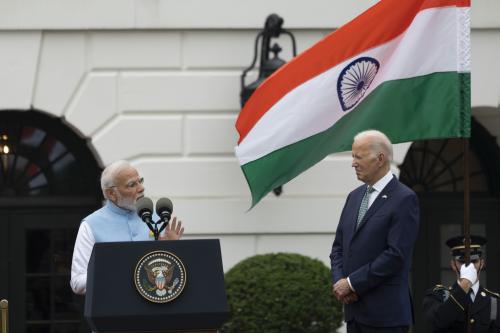
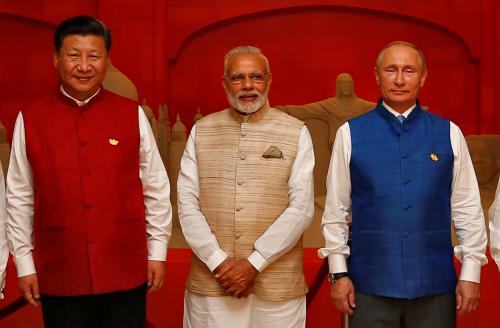
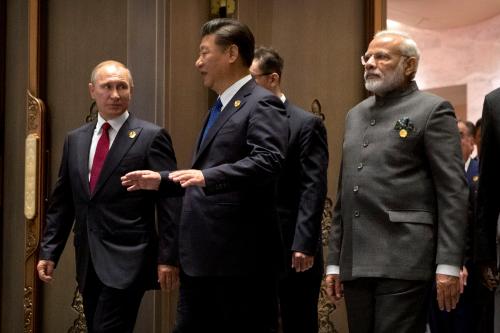

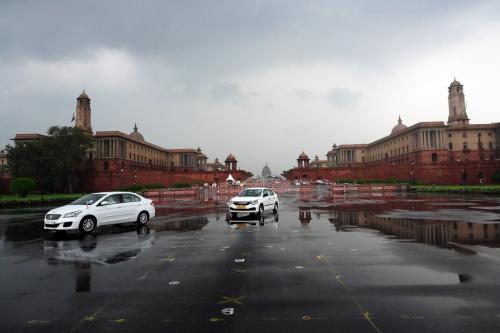
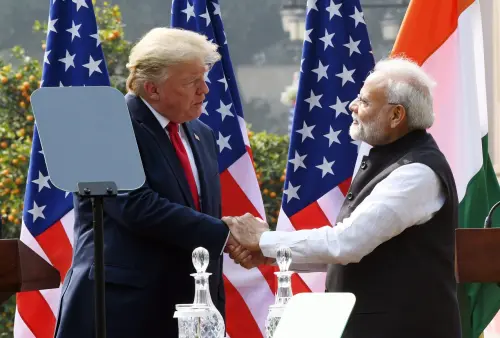
Commentary
Is there going to be an India-China deal?
July 2, 2024